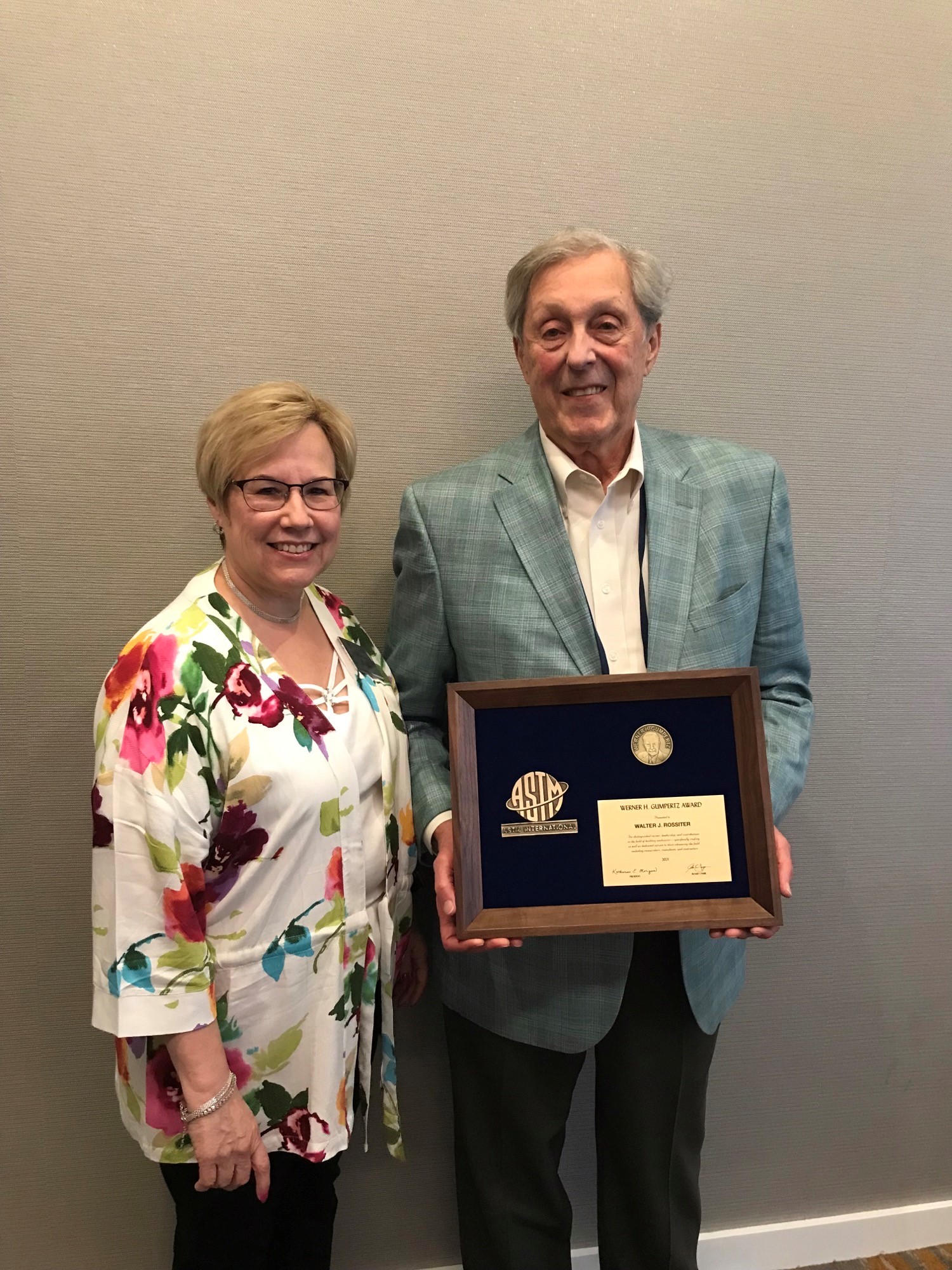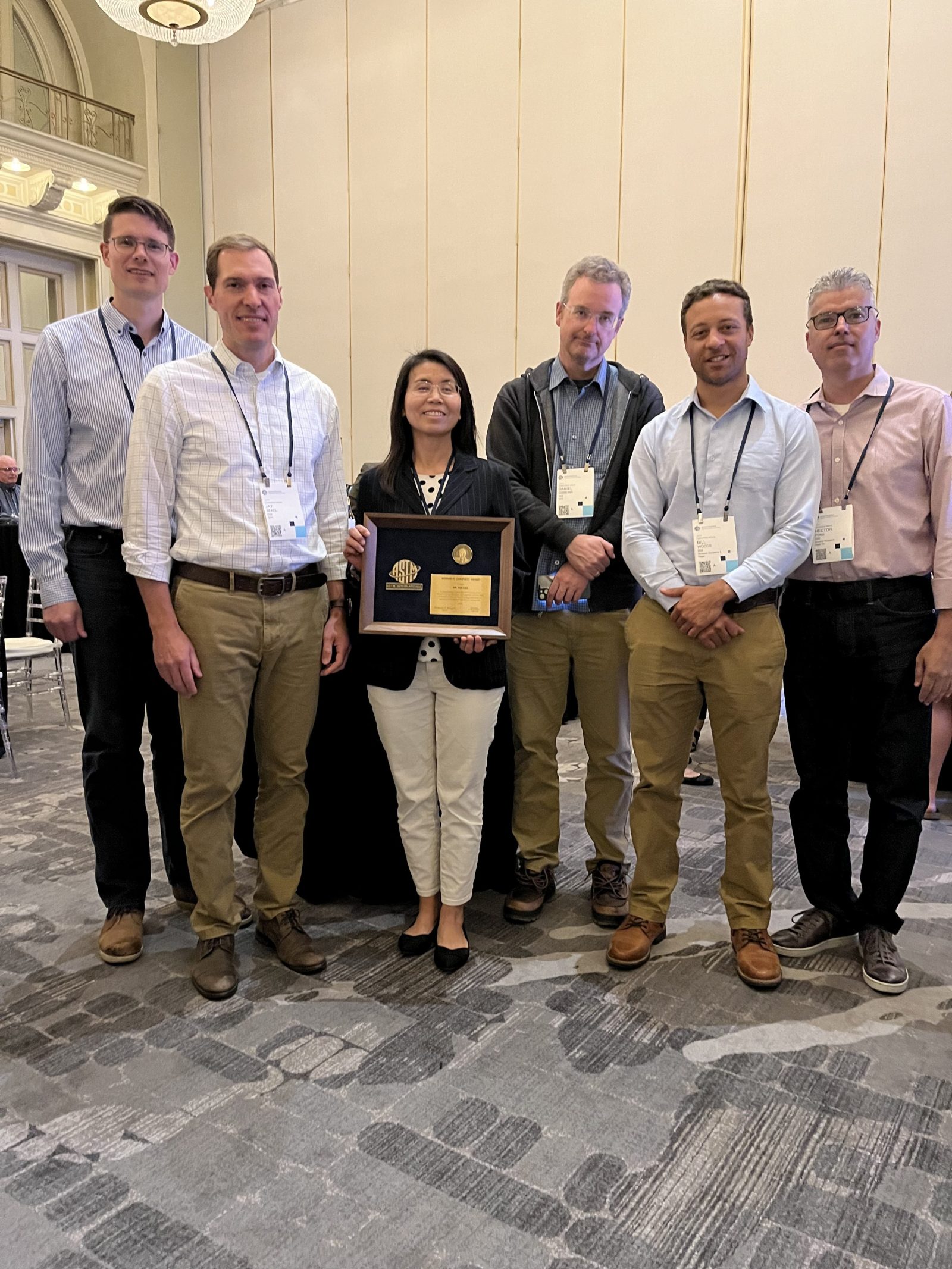Celebrating Service to the Industry: ASTM International’s Werner H. Gumpertz Award

ASTM International (ASTM) established the Werner H. Gumpertz Award in 2019 to honor our co-founder’s important contributions to the industry. Simpson Gumpertz & Heger (SGH) Associate Principal Philip Moser, an active ASTM member, sat down to discuss Werner’s legacy and why this award is an important achievement for those in our profession.
Tell us about this award.

Phil Moser.
The Werner H. Gumpertz Award is presented annually to an engineer, scientist, architect, or contractor who has made significant professional contributions to the field of building enclosure technology or to solving multidisciplinary technical problems in the construction industry. This award is one of nine society-level awards from ASTM. ASTM’s Board of Directors establishes society awards that recognize significant contributions beyond involvement with one particular committee, so the Werner H. Gumpertz Award is a true distinction.
Werner was best known as a roofing expert but was trained as a structural engineer. Throughout his career, he was able to apply this multidisciplinary expertise for complex challenges. He had a way of using his holistic knowledge to solve problems where others struggled. After he died in 2017, we thought it was important to establish this award because he was such a prolific author and presenter, and he was deeply involved in developing numerous standards. We created this award as part of his legacy, to recognize people who make similar contributions in their particular field.
How did Werner embody the spirit of this award?

Werner at work in the field.
SGH has a strong learning culture, which was established by our founders. We’re encouraged to give back to the industry and find ways to help grow our profession. This was especially true for Werner. He authored countless papers, presented at conferences in many countries, and constantly found ways to encourage younger generations of engineers. Werner was actively involved with ASTM for nearly six decades. He was a member of numerous committees and held leadership positions on many of them. The time he spent with ASTM wasn’t something that he got paid for, it was important to him—to give back to the community and the industry, share his knowledge, and ensure the standards being developed would serve the needs of the community.
Why is this important?
It’s twofold. First to remember and recognize Werner’s legacy, his contributions, and the learning culture he established. Secondly, to encourage and acknowledge people who are doing the same. There are a lot of great people out there doing amazing things, and it’s nice to have a prestigious award to present to them. So many of our industry peers are doing impressive work and going above and beyond, and we want to acknowledge that. If I received this award in twenty-five years, it would be an incredible honor.
Tell us about past recipients.
We’ve already honored some truly amazing professionals. The first recipient was Larry Carbary, a chemical engineer who spent the bulk of his career at Dow Corning. He specialized in silicone sealants and was very committed to educating the industry about the use of these materials, for which he found novel uses through the course of his career. Walt Rossiter was the next recipient of the award. Walt was a researcher for the National Institute of Standards and Technology (NIST), and remains active with ASTM and other professional organizations. His career overlapped with Werner’s quite a bit, they were good friends. Xia Cao was honored last year. She’s a research director of waterproofing and liquids at GCP Applied Technologies, and specializes in material science, process engineering, and product development for waterproofing systems and building materials.
Who should apply?
Nominees and nominators can come from anywhere. We ultimately want to recognize people working to make significant contributions to furthering their industry, whether that be work on multidisciplinary problems or something specific within the field of building enclosure technology. Nominees must be professionally active, including work on research publications, committee involvement, helping write codes and standards, and frequently presenting or publishing papers. Werner set a high bar with his involvement in ASTM and other professional organizations and all the papers and publications he developed. We look forward to continuing to advance the industry while honoring Werner at the same time.

If I received this award in twenty-five years, it would be an incredible honor.
Tell us about your involvement with ASTM.
ASTM stands for the “American Society of Testing and Materials.” They go by “ASTM International” now because they achieved worldwide importance in establishing standards for materials, systems, and products. As engineers, we use so many products and materials when building, renovating, or repairing a structure. To avoid reinventing the wheel for every single material or physical property, we reference ASTM standards as a baseline industry consensus on the minimum standards for materials, and how to test them.
My involvement with ASTM began in 2009 when SGH was looking for younger staff members to take over roles that had been occupied by those at the firm for many years, including Werner. I joined ASTM’s Committee D08 on Roofing and Waterproofing and have been actively involved since. I joined Committees D04 on Road and Paving Materials, C18 on Dimension Stone, Committee E06 on Performance of Buildings, and Committee E60 on Sustainability, although most of my involvement remains focused on roofing and waterproofing. When Werner was ninety-nine, a colleague approached me about creating an award in Werner’s name. I worked with the team at ASTM to see it through because I have such a strong respect for his contributions and what an honor in his name could mean to others in the industry.
How’d you get to know Mr. Gumpertz?
When I first interviewed with SGH, Mr. Gumpertz was eighty-seven and coming to work every day. It spoke volumes that one of the co-founders, with hundreds of employees, saw the importance of interviewing someone like me for an entry-level role. Once I got the job, I was lucky to get a cubicle assigned two doors down from him. While we didn’t do a lot of project work together, I frequently stopped by his office to say hi or bounce ideas off him. Werner reviewed the first article I authored and anyone who knows Werner, knows his love of a red pen. There were a lot of red lines, but he provided great comments that helped shape the paper—I was so grateful that he took the time to guide me like that. He always took the time to share his knowledge about the industry, and I hope to keep that spirit alive throughout my career, too.


